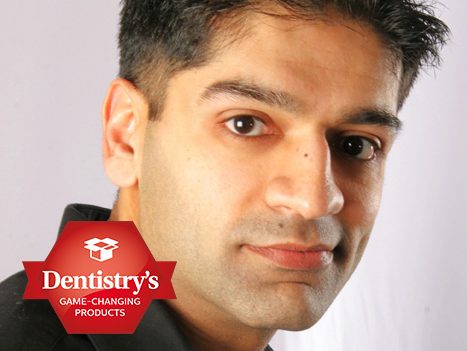 To celebrate 25 years of Dentistry magazine, we’ve asked leading dental professionals for their game-changing innovation that shaped their career. In this article we asked Murtuza Hasnaini what his game-changing product is.
To celebrate 25 years of Dentistry magazine, we’ve asked leading dental professionals for their game-changing innovation that shaped their career. In this article we asked Murtuza Hasnaini what his game-changing product is.
Murtuza Hasnaini trained at Barts and The London.
After further trining at the Royal London Hospital and Great Ormond Street, he returned back to the Royal London for three years of full-time specialist training in orthodontics.
He set up his practice, The Brace, in 2004.
Murtuza is actively involved in teaching and training.
Dental Monitoring
Dental Monitoring is a relatively new product that within a short space of time has brought about a revolution in the way we treat patients in my practice.
The number of appointments necessary for a treatment has reduced.
Patient compliance has improved and I now have the ability to monitor a patient’s treatment from anywhere at anytime.
The system works by the patient downloading the Dental Monitoring app onto their smartphone.
They can then take intraoral scans of their teeth.
Artificial intelligence interprets these scans and sends reports to the clinician’s dashboard.
The AI analyses over 100 individual parameters from each scan for each patient.
Such as whether their oral hygiene is sufficient.
Or whether the appliance they are using is fitting well and remains active or has become passive.
Virtual appointments
The vast majority of patients in my practice are adults having orthodontic treatment with the Invisalign system.
Before Dental Monitoring, these patients would need physical appointments with the practice for each stage of the treatment.
Whilst we still need some of these physical appointments, nearly all the treatment progression appointments are now virtual appointments.
This has meant a 40% reduction in chairside time per patient.
In addition, as these scans are taken every week (or even more regularly if you wish), treatment progression is now monitored so closely that problems are spotted almost as soon as they occur, rather than when the patient physically attends, which may be once every four to 12 weeks.
As patients know we are ‘watching’ them and are only able to change their aligners when we tell them, compliance is vastly better and we truly personalise aligner changes to when it really is time to do so.
For my patients who choose to have fixed braces, the AI overlays the current position of the teeth to a pre-treatment 3D model of the dentition and sends detailed information on the movements taking place within each arch and each individual tooth allowing us to see patients at the most appropriate interval.
In the event of a breakage to the braces, as this is visible on the scans, the clinical team is ready for the appointment before even seeing the patient, reducing chairside time and improving efficiency.
Positive feedback
Oral hygiene monitoring has also improved.
The app automatically warns us when tartar or plaque is building up.
It also warns us if a cavity or an ulcer is coming up, so we can direct the patient to the relevant clinician.
Less appointments per patient not only means more profit per patient, but there are further savings to make.
This includes less staffing required, saving on printing and sterilising costs to name a few.
As patient feedback is overwhelmingly positive, Dental Monitoring is without doubt the future for monitoring of treatment progress.


